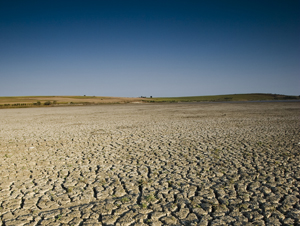
World Day to Combat Desertification and Drought
 Monday, June 17 marks the United Nation’s “World Day to Combat Desertification and Drought.” Declared by the United Nations General Assembly in 1994, the day seeks to raise global awareness of desertification and to promote solutions to this worldwide problem. For 2013, the Day’s theme is “Don’t let our future dry up,” which will look at freshwater scarcity.
Monday, June 17 marks the United Nation’s “World Day to Combat Desertification and Drought.” Declared by the United Nations General Assembly in 1994, the day seeks to raise global awareness of desertification and to promote solutions to this worldwide problem. For 2013, the Day’s theme is “Don’t let our future dry up,” which will look at freshwater scarcity.
Ironically, desertification does not only refer to the encroachment of sand at deserts’ margins, but also to arable land degradation around the world. Often times, unsustainable farming techniques and deforestation removes the plant cover that holds the soil. Once the topsoil is removed, wind displaces the fertile layer of soil, creating extremely poor agricultural conditions. In fact, each year, twelve million hectares are lost to drought and desertification, on which twenty million tons of grain could be grown.
The United States is not immune to the effects of desertification. Desertification in the American Southwest is a major concern for the United States as water resources decrease and arable land disappears.
Climate change directly impacts this region through alterations in weather cycles. The Southwest is dependent on predictable cycles of precipitation that occur during El Niño phases. However, recent increases in temperature have changed the frequency of these phases. In addition, decreased snowfall causes less snowmelt to recharge the streams in the area. Consequently, the region now suffers from extreme drought.
This year’s theme of freshwater scarcity is particularly apt given the severe water problems facing the American Southwest.
In the latest report from the U.S. Drought Monitor, 100% of New Mexico, Colorado, Utah, Arizona, Nevada, and California are in drought conditions. In addition, the drought is exceptional in almost 45% of New Mexico and 16% of Colorado.
Drought in these states has larger implications for the American West and for the country as a whole. The Colorado River is responsible for generating power for much of the populated areas in the region. However, due to drought conditions, the energy demand from the Colorado River is not met.
Another example of the severe drought conditions plaguing the American West is the record wildfires burning across Colorado. So far, fires have burned upwards of 25 square miles and prompted the evacuation of over 35,000 people. Lack of precipitation and increased temperatures in Colorado has made the situation worse.
On this World Day to Combat Desertification and Drought, it is important to consider the harmful effects of warmer temperatures and less frequent precipitation associated with climate change. Inaction by the United States and the international community on fixing climate change problems will further exacerbate global drought and desertification, causing irreparable damage.





